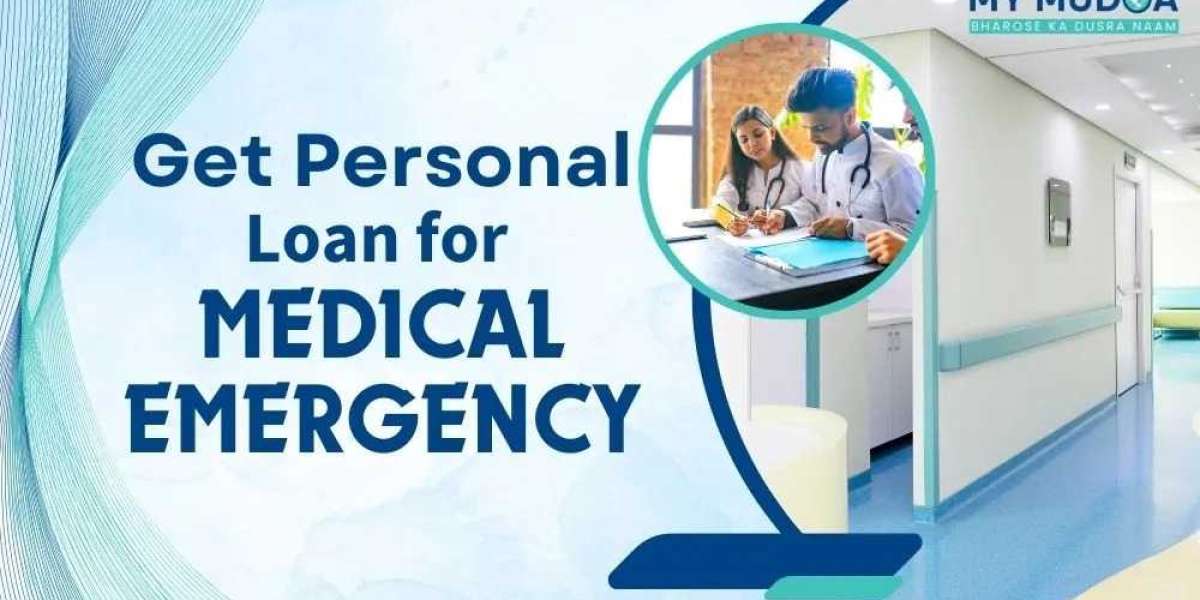Medical emergencies can strike unexpectedly, often bringing along a significant financial burden. Whether it's an urgent surgery, hospitalization, or unexpected medical treatment, the costs can quickly add up. In such situations, a personal loan for medical emergency can provide a lifeline, offering quick and easy access to funds without requiring extensive paperwork.
Why Opt for a Personal Loan for Medical Emergencies?
- Instant Approval and Quick Disbursement: Medical emergencies demand immediate financial attention. Personal loans are typically processed faster than other forms of credit. Many lenders provide instant approval and disburse funds within 24 to 48 hours, making it ideal for urgent medical needs.
- No Collateral Required: Most personal loans are unsecured, which means you don’t need to pledge any asset as collateral. This makes it easier to apply without worrying about losing personal property.
- Flexible Repayment Terms: Lenders often offer flexible repayment terms for personal loans, allowing you to choose an EMI schedule that suits your financial capacity. You can repay the loan throughout 1 to 5 years, depending on your ability to pay.
- Loan Amount for Various Medical Needs: Personal loans for medical emergencies can cover a wide range of medical expenses, including:
- Hospitalization bills
- Surgery costs
- Medical tests and diagnostics
- Medications
- Post-operative care
- Emergency procedures
Eligibility Criteria for Medical Emergency Loans
Most banks and financial institutions have similar eligibility requirements for personal loans. The following criteria are commonly required:
- Age: Applicants should be between 21 and 60 years old.
- Income: Both salaried and self-employed individuals are eligible, though a minimum income threshold applies.
- Credit Score: A good credit score (typically above 650) is preferred to increase the chances of approval and better interest rates.
- Employment Status: A stable source of income is required. Salaried individuals may need a minimum of 1 year of work experience, while self-employed individuals may need to show steady business income.
Steps to Apply for a Medical Emergency Loan
- Choose a Loan Provider: Research and compare different lenders offering personal loans for medical purposes. Look for those offering competitive interest rates, flexible repayment options, and fast approval.
- Fill Out the Application: You can apply online or offline with the chosen lender. Many platforms provide instant online applications for faster processing.
- Submit Documents: Provide the necessary documents, including ID proof, income proof, address proof, and medical bills or estimates (if required).
- Loan Approval and Disbursement: Once your application is approved, the loan amount will be disbursed to your account. You can use the funds for medical expenses immediately.
Benefits of Medical Emergency Personal Loans
- Fast processing to meet urgent medical needs
- No restrictions on the use of funds
- Easy documentation for hassle-free application
- Convenient online application from the comfort of your home
Conclusion
In times of medical crises, having access to immediate funds is crucial. A personal loan for medical emergency ensures that financial concerns don’t hinder timely medical care. With competitive interest rates, quick disbursal, and easy repayment terms, personal loans provide much-needed support during stressful times. Always compare different loan providers and choose one that best suits your requirements to manage your medical expenses effectively.



